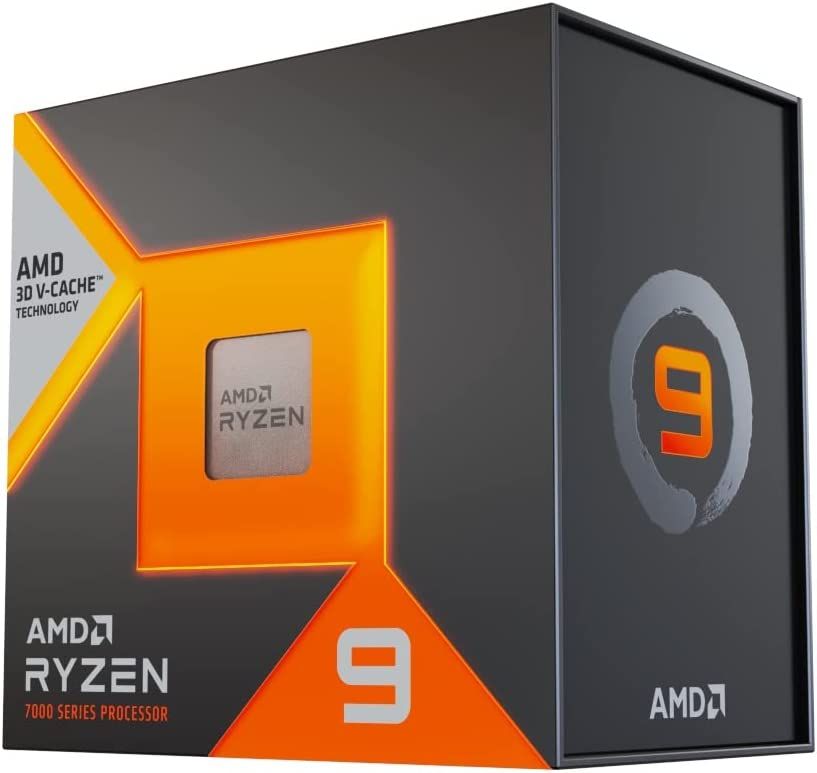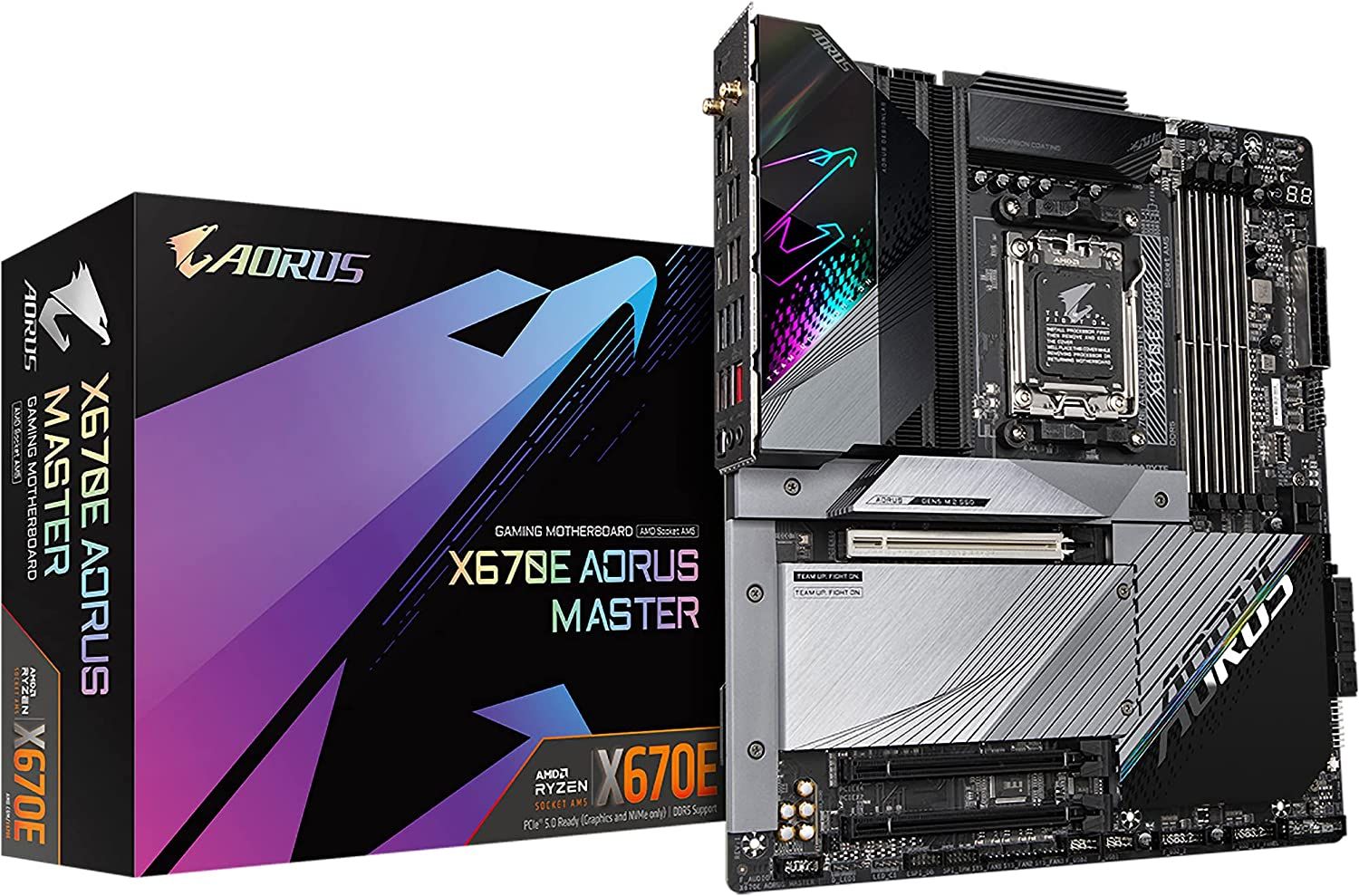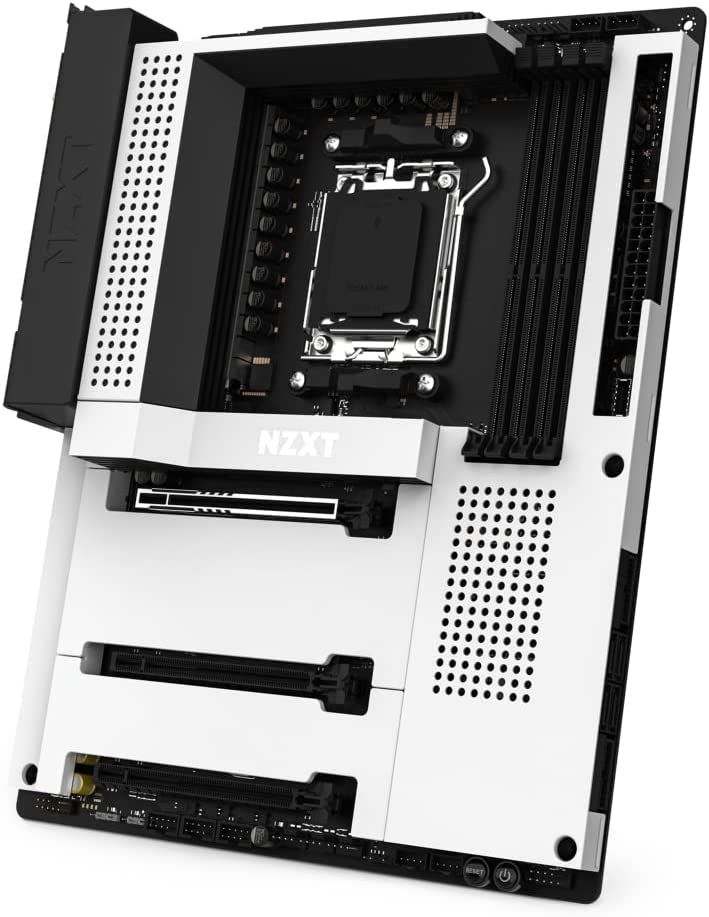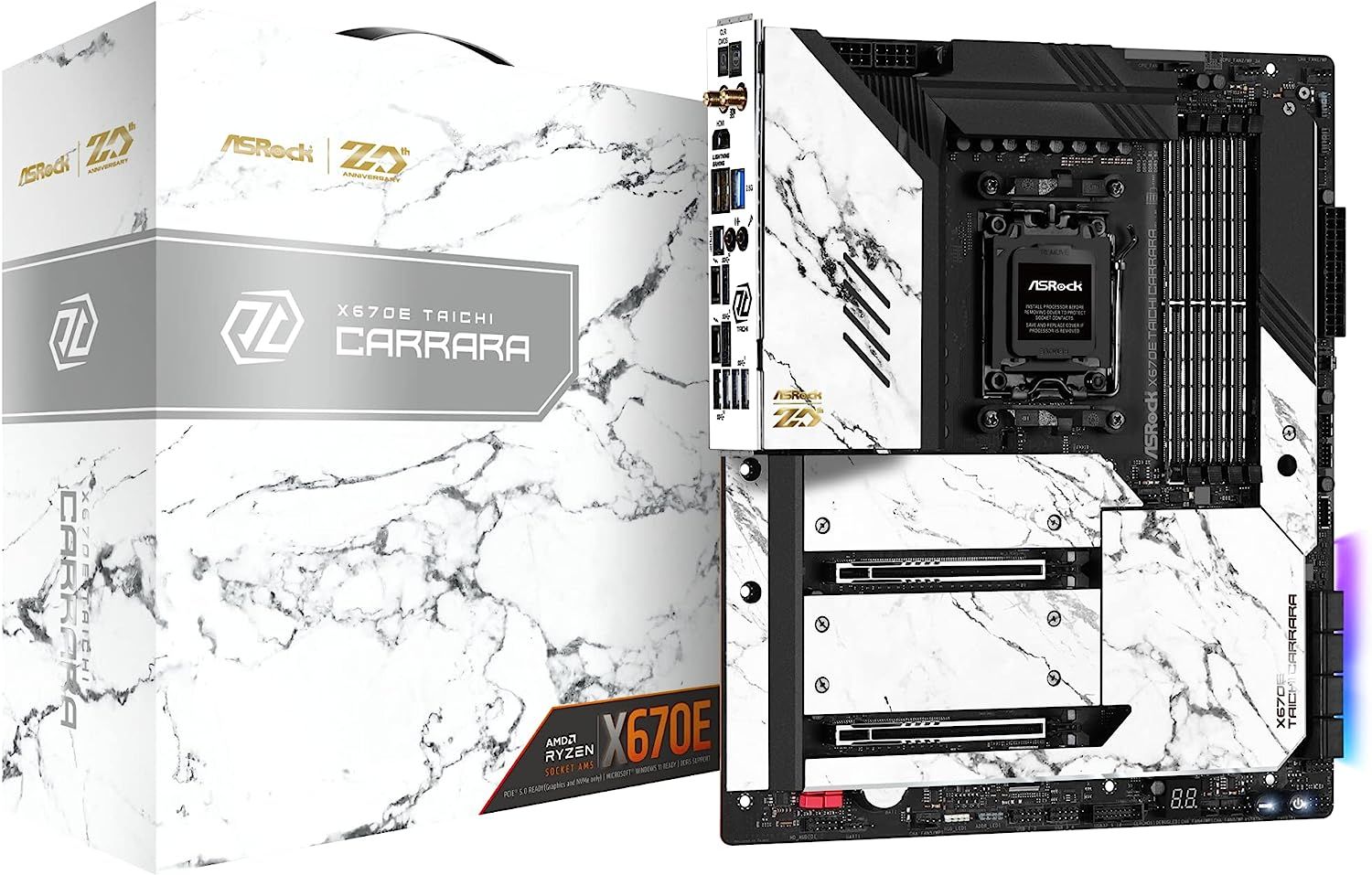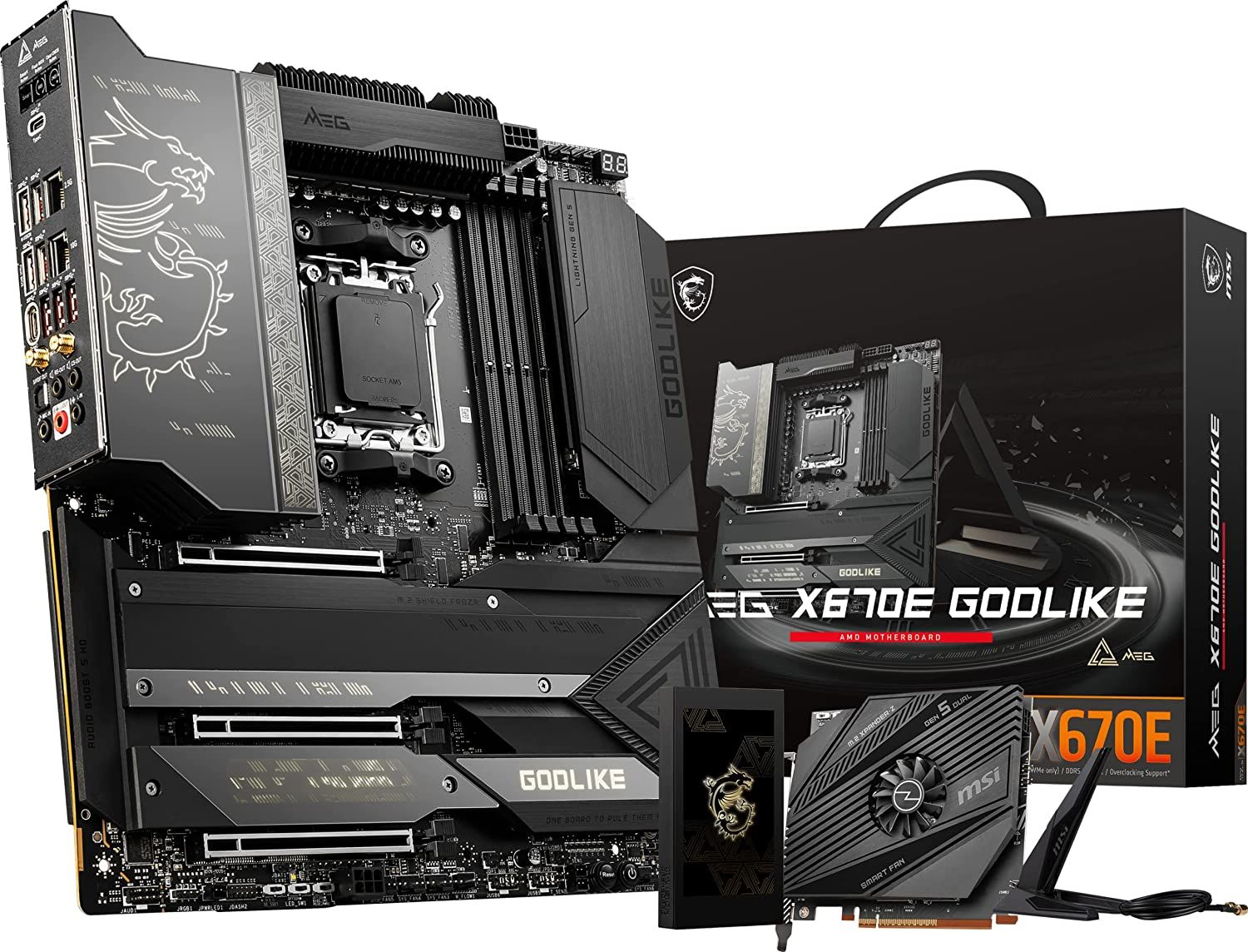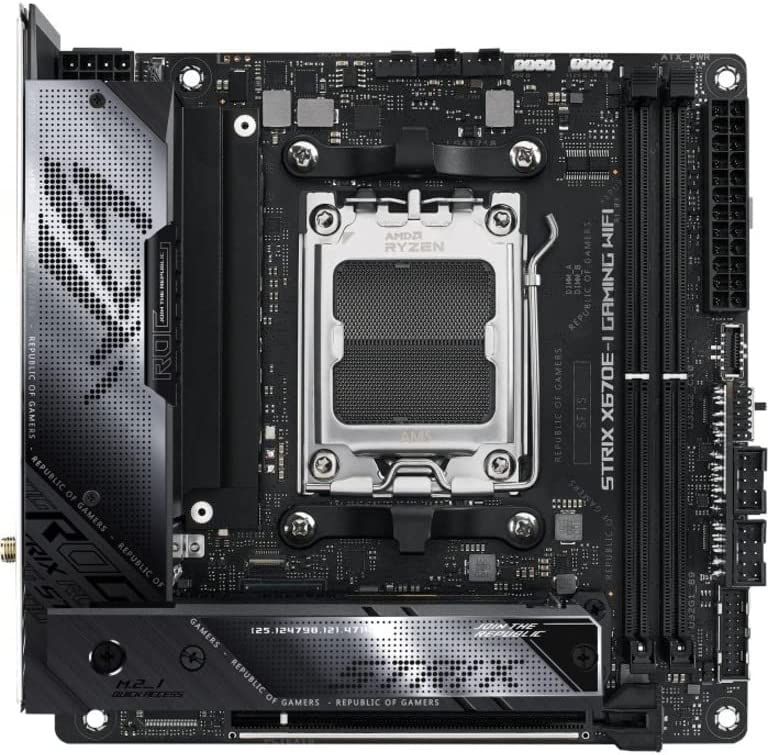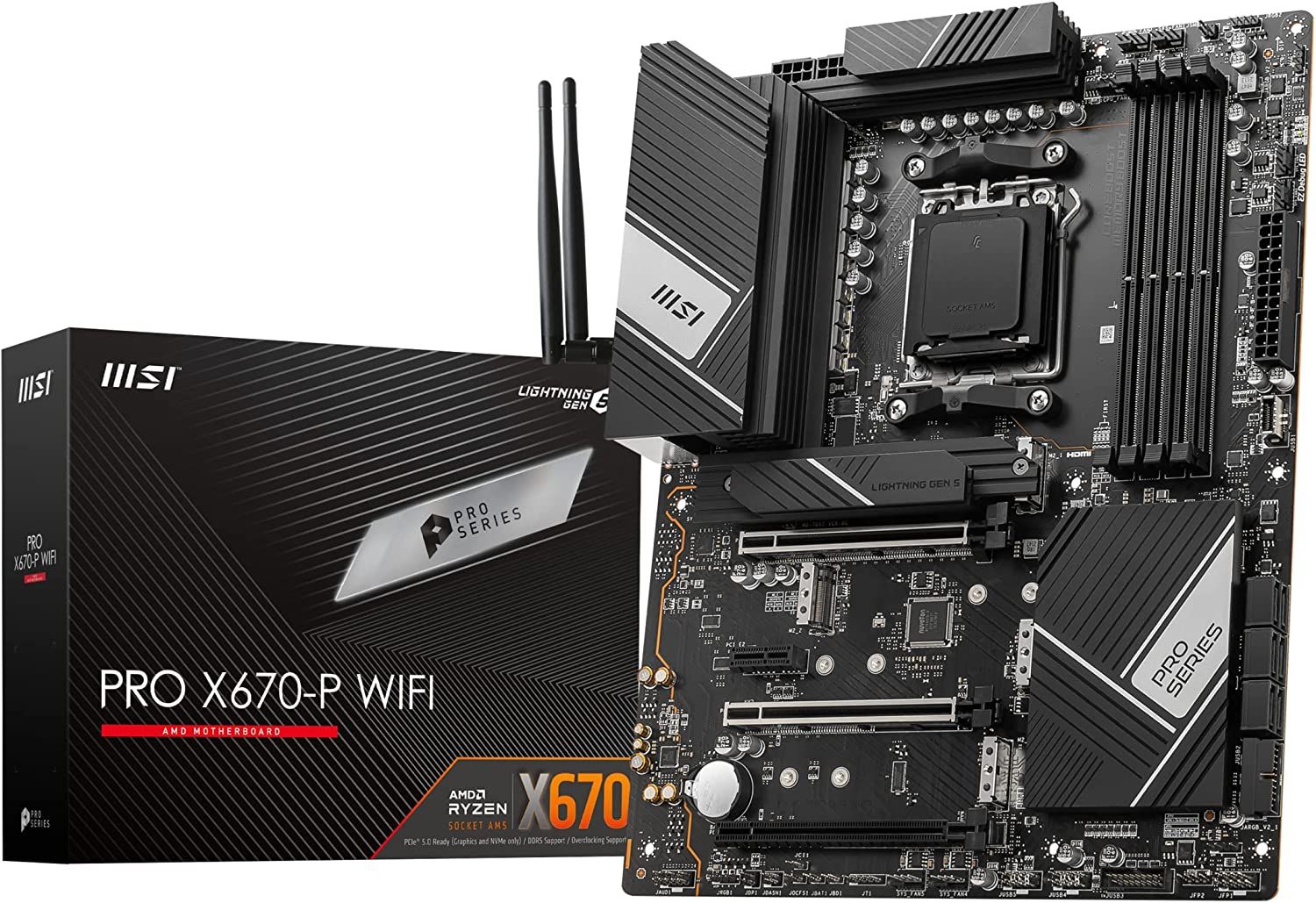The Ryzen 9 7950X3D is an enhanced 3D V-Cache-infused version of one of AMD’s most outstanding offerings, the Ryzen 9 7950X. It features a lower TDP, slightly lower clock speeds, and a considerably larger L3 cache, making it one of the best options for gaming and ideal for those who want to build an enthusiast-tier gaming rig or simply a high-end productivity PC.
Harnessing all the pros of the state-of-the-art X670/X370E platform and a large vertically stacked L3 cache, the chip carries the day when it comes to gaming performance while pushing boundaries in terms of energy efficiency for productivity use cases. It can seamlessly handle 4K games while offering robust metrics even in extreme multicore workloads like video editing or 3D rendering. Nonetheless, when buying a powerful CPU like this one, a user will also need the right motherboard. This will ensure that they can take advantage of all the great features, expansion slots, and ports for the PC that is being built.

AMD Ryzen 9 7950X3D vs 7900X3D: Which to Buy?
The AMD Ryzen 9 7950X3D and 7900X3D are AMD"s latest attempts to wrest back the gaming market from Intel. But how do they stack against each another?
AMD's Ryzen 9 7950X3D: 16 Cores of Zen
AMD markets the Ryzen 9 7950X3D as a 'for creators' CPU, unlike its more mid-range and gaming-specific CPUs in the form of the AMD Ryzen 9 7900X3D and Ryzen 7 7800X3D. To do this, it leverages 16 Zen 4-based cores – as opposed to Intel's Big.LITTLE approach – when it comes to the competing Alder Lake, Raptor Lake, and Raptor Lake Refresh alternatives.
It flexes its considerable muscle in both gaming and productivity benchmarks with its 16-core, 32-thread configuration and its ability to behave quite closely to the Ryzen 7 7800X3D for gaming. While it is considerably more efficient than Intel's offerings core-for-core and even on a performance tier basis, it does have higher power requirements than the other two CPUs it launches with.
Factors to Consider When Shopping for the Best Motherboards for AMD Ryzen 9 7950X3D
When shopping for the best motherboards for AMD Ryzen 9 7950X3D, users must do their research to end up with an AM5-based solution that works for them. Here are additional factors to consider:
Picking the Right Chipset
Before purchasing a motherboard for AMD Ryzen 9 7950X3D, users must ensure that it has the correct chipset. AMD Ryzen 9 7950X3D and other Ryzen 7000-series CPUs require 600-series chipsets like X670, X670E, B650, and B650E. The X670E chipsets are currently the highest-end option for the Ryzen 9 7950X3D since it has plenty of PCIe 5.0 lanes and also more generous I/O options on average compared to more budget-oriented chipsets.
Storage Options
Connectivity Options
The AMD Ryzen 9 7950X3D is the highest-end consumer-grade CPU one can buy from AMD. It even eclipses Intel's 24-Core Core i9 14900K in price. This means that it caters to enthusiasts and productivity-centric users who require plenty of networking and connectivity options. Users should ideally be provided with plenty of USB ports and an up-to-date networking stack from any motherboard that is expected to handle one of AMD's fastest multicore CPUs for both gaming and productivity.
Game ZXC's Picks for the Best Motherboards for the AMD Ryzen 9 7950X3D CPU
The Gigabyte X670E Aorus Master is Game ZXC's top pick for a suitable X670E motherboard. It delivers where it matters in terms of performance on the AM5 platform. What is essentially a very good-looking board comes with a relatively affordable price tag compared to the competition. It has excellent I/O, an above-average power delivery mechanism, and dedicated heat sinks for all of its M2 slots.
While Gigabyte does have a ways to go compared to Asus (and to a lesser extent MSI), it does deliver a stellar package. It seems to be steadily delivering BIOS updates that should see it rectify some of the complaints users have had (such as slow boot times) over time. For now, there is nothing better in terms of overall value or even a mix of value and performance for AMD 7950X3D and 7900X3D build aspirants, making this a wholehearted recommendation from the Game ZXC team.
Gigabyte's X670E Aorus Master currently trades at a significant discount at the time of writing, making it an even more attractive option versus some of its more pricey competition.
The NZXT N7 B650E Gaming Wi-Fi Gaming Motherboard is the only B650/B650E motherboard currently on our list and for a good reason. It does its job exceedingly well while being priced to sell with an aesthetic that does take on some of the more premium designs on our list, delivering better value. It's also Game ZXC's primary pick for the best motherboard for the Ryzen 7 7800X3D CPU.
With up-to-date networking options, a beautiful black or white metal cover, and a price that is relatively reasonable compared to most of the other options in this guide, the NZXT N7 B650E Gaming Wi-Fi Motherboard is our pick for the best alternative overall motherboard for the AMD Ryzen 9 7950X3D processor if you are not bothered with expansion limits due to the X670E chipset. Most gamers should be more than happy with what it does offer in that department.
A small discount on Amazon makes it an excellent and well-designed B650E alternative to the pricier X670E motherboards, a position it has earned thanks to a mix of aesthetics, value, and utility. For users looking for a black-themed motherboard with a similar price tag, NZXT does deliver on that promise too.
The ASRock X670E Taichi Carrara is arguably the most premium-looking X670E motherboard in this guide. It also builds on its lead in the aesthetics department by backing it with a solid power delivery system, USB 4 ports at the rear, and plenty of connectivity under the hood for users looking for a well-rounded alternative to options such as the Gigabyte X670E Aorus Master.
With quad M2 PCI-E slots, one of the least bloatware-inducing software suites in the business, and a price tag that sees it available with less-well-built X670E options in play, the ASRock X670E Taichi Carrara delivers on the lofty requirements imposed on it by the Game ZXC team and then some. If the Carrara marble design doesn't convince gamers and enthusiasts looking for an upgrade, ASRock has also thrown in a free fan to dull the blow of the premium it commands over its black-colored version.
The MSI MEG X670E GODLIKE Motherboard is MSI's highest-end motherboard to cater to AMD's product lineup ever. It does come with an included IPS touchscreen to display useful information as well as a massive 24+2+1 phase power delivery design that should ensure that the motherboard can handle even the most stringent of overclocking and power delivery requirements as the AM5 socket becomes AMD's new mainstay as a platform. With the ability to push past 6600 MHz with ease and features built to allow users to break existing overclocking records, the MEG X670E is not everyone's cup of tea.
That being said, the motherboard does not seem to cater to enthusiasts on a budget with an MSRP of nearly $1300. Plus, the lack of native USB 4.0 ports on what is arguably the most expensive motherboard to date might be a cardinal sin for some. If users are interested in the MEG, however, they are either enthusiasts with very deep pockets or attempting to set a new overclocking world record on AMD's fastest X3D CPU for gaming and productivity.
Not much has changed for the MSI MEG X670E GODLIKE Motherboard as it remains rigidly in place as the most expensive X670E motherboard money can buy. Unless you are interested in pushing boundaries with the newer AMD chips or into enthusiast overclocking, there isn't much more that you get for spending over twice what one would on the ASRock X670E Taichi Carrara above it.
For users who must have the very best overclocking performance from what is arguably the best AMD CPU they can buy in 2024, the MSI MEG X670E GODLIKE seems like your best bet as an overclocker.
The ASUS ROG STRIX X670E-I GAMING Wi-Fi is an interesting choice for an X670E motherboard that doesn't occupy a lot of space but still offers plenty of options. This is partially due to its bundled ROG Strix HIVE component that allows a lot of fine-grained external control of the motherboard for features such as its FlexKey button. It does deliver overclocking potential, and stable power in a very small package.
It also currently happens to be the most viable M-ITX option out there with a full X670E chipset in tow, making it a no-brainer for those looking to pack a lot of power in a small chassis. It isn't without its tradeoffs, however, but those come with the territory, such as limited expansion slots as well as it running significantly warmer in M-ITX builds. The latter is a common complaint by users online.
The ASUS ROG Strix X670E-I Gaming Wi-Fi remains one of the best M-ITX options for compact AM5 gaming thanks to its innovative STRIX HIVE component which has been resilient in terms of pricing, trading only marginally lower at a sub $30 discount of late. If users are on the fence about spending so much on an X670E chipset, they can pick up a cheaper B650E variant from the same manufacturer, also in the Strix trim instead, which should also meet their needs even if it excludes some of the perks of its more expensive sibling.
The MSI PRO X670-P Wi-Fi Pro Series Motherboard is our pick for a budget motherboard that ticks all the right boxes. It is currently on sale on Amazon for $229 and features plenty of IO options, Wi-Fi 6E support, and HDMI and DP ports built into the motherboard, an option that some of the more expensive motherboards on our list either skipped or worked around.
It could, however, have undergone some testing before release. There are complaints about it having a sizable boot cycle and compatibility issues across the board, but it does seem that MSI has released multiple BIOS updates to rectify these issues. All in all, the MSI PRO X670-P Wi-Fi Pro Series Motherboard still happens to be the best value for money Ryzen 9 7950X3D-ready motherboard out there that won't break the bank for you.
With a better price point for an X670 chipset offering and multiple BIOS updates mitigating some of the longer boot cycle issues, the MSI PRO X670-P Wi-Fi Pro Series Motherboard is now a stronger candidate for a budget motherboard for the Ryzen 9 7950X3D than it was previously, holding its position firmly as an excellent alternative to some of the flashier (and significantly pricier options) on Game ZXC's list.
How to Pick the Right Motherboards for the AMD Ryzen 9 7950X3D
If users are considering purchasing AMD's top-tier CPU or its slightly cheaper 12-core sibling (or even the octa-core gaming-centric Ryzen 7 7800X3D), one needs a motherboard to go with it. Given the price point that the 7950X3D currently trades at, one can easily expect their options to be leaning toward the more pricey end of the spectrum.
On-board I/O & Connectivity: Gamers and professionals alike benefit from having plenty of I/O options, including connectivity options such as USB-C, USB-A, Wi-Fi, and Ethernet. These make the motherboard viable for gaming and productivity-related tasks. As the 7950X3D offers both DDR5 and PCI-E 5.0 support thanks to its AM5 socket, having great I/O on offer for a motherboard is essentially crucial to ensure it can meet the ever-changing needs of the user in question.
Future-proofing: Not all motherboards are created equal and while AMD's AM5 socket is expected to see continued support in the foreseeable future if its socket AM4 offerings are any indication (advertised by AMD for their longevity), some options may not have PCI-E 5.0 slots or PCI-E 5.0 M2 slots support for the latest standards of Wi-Fi and might use a limited chipset which could potentially not support future AMD processors completely. Users with a Ryzen 9 7950X3D normally would like to stay ahead of the curve, and picking a motherboard that ages well might play into easier upgrades down the line.
Overclocking Potential: While AMD's previous X3D CPU, the Ryzen 7 5800X3D does not overclock out of the box, the 16-core, 32-thread Ryzen 9 7950X3D does. It stands to benefit from a multitude of tweaks including AMD's Precision Boost Overdrive presets allowing users with motherboards that have more fine-grained control over their voltages and power delivery. This means that users intending to eke out more performance from their unlocked creator CPU need to take a closer look at the power delivery mechanism and the quality of their motherboard's VRMs. Although AMD's Zen 4 cores are considerably efficient compared to their competition, they do have significant power when firing on all cylinders in a 16-core configuration.
Motherboard Choices for the Ryzen 9 7950X3D: Plenty Of Good Options
With an abundance of options, especially in the $250 to $600 range for AMD's AM5 motherboards, many of which can do justice to the Ryzen 9 7950X3D, picking a motherboard comes down to a mix of personal preference, user requirements, and quite importantly, the chipset on offer with each motherboard.
The X670E (and to a lesser extent, the X670) chipset is where the performance and enthusiast-tier motherboards are being focused, and with good reason; they offer more PCI-E lanes, more I/O flexibility, and are targeting the top end of AMD consumers (where all the 7950X3D buyers will generally be found). That being said, the B650E chipset also has multiple offerings that can make the 7950X3D and the 7900X3D processors shine while being easier on the wallet.

The Best Budget Motherboards For AMD Ryzen 9 7950X3D CPUs
Here are some of the best budget motherboards that users can pair with their brand new Ryzen 9 7950X3D Processor!
There are no bad choices given that all X670E and X670 as well as B650E/B650 chipsets are compatible with the Ryzen 9 7950X3D and the Ryzen 9 7900X3D product lines. That being said, it does help to pick a motherboard that is more future-proof, especially given AMD's propensity to stick to a particular socket for multiple years compared to Intel (AM4 anyone?).
All in all, all the motherboards we listed will get the job done but a few might break the bank on what buyers planned to spend on their next upgrade. Still debating whether to get a 7950X3D or a 7950X? Game ZXC has buyers covered there with an in-depth buyer's guide to make sure they make the right, informed choices.
FAQ
Q: What motherboards should I get for a Ryzen 9 7950X3D?
You can pick any B650, B650E, X670, or X670E motherboard for use with the Ryzen 9 7950X3D, but we would advise doing research and ideally picking one with an excellent VRM solution.
Q: What is a good budget AMD X670 motherboard?
The MSI PRO X670-P Wi-Fi ProSeries Motherboard is our pick for the best budget X670 chipset-based motherboard, given its current price and feature set.


